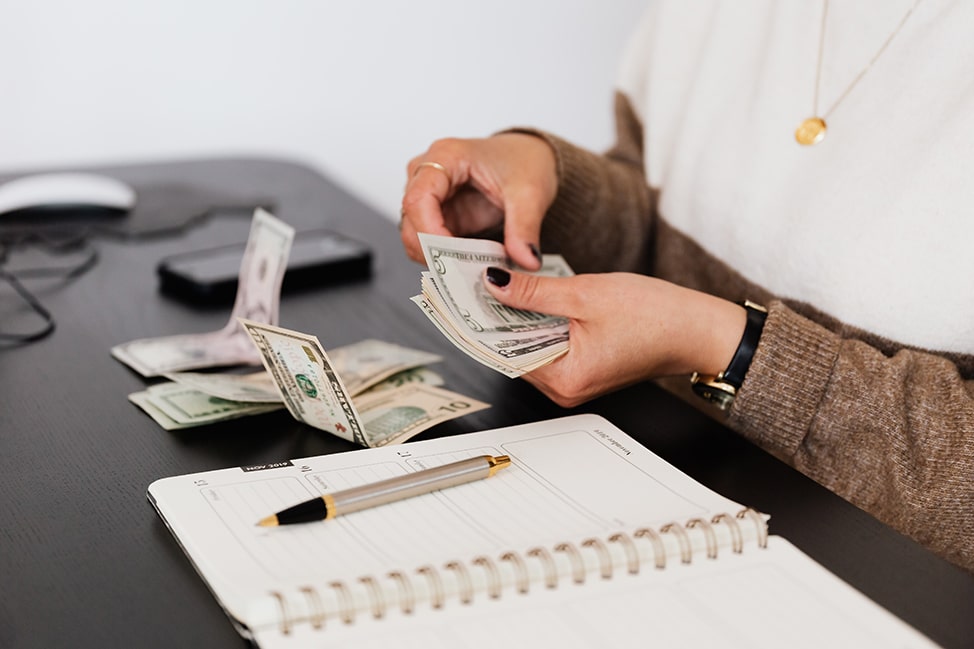The 39- to 21-year-old generational cohort known as the Millennials is an interesting barometer of how many Americans currently feel about investing. Perhaps the generation hardest hit by recent global events – from the 2008 great recession to the ongoing coronavirus pandemic – many born between 1981 and 1996 have seemingly lost faith in the system.
In the financial world, uncertainty, shock and mistrust are fueling a tendency to hold back from investing in traditional assets. Instead, many investors are staying true to cash.
Millennials are not alone in this behavior. Across the US we are seeing particularly high personal savings rates. According to Crane Data, funds amounting to $17 trillion were being held in money market funds, bank savings accounts and certificates of deposit (CDs) as at January 2021.
It is worth noting that things are normalizing and investor appetite for stocks is on the rise. In fact, by October 2021, the personal savings rate in the US had settled back to the December 2019 level of 7.3 percent, having peaked at 30 percent over the course of the pandemic.
The surge in the savings rate over the past year is a pretty good indicator of the uncertainty investors of all ages are feeling, and it reflects concerns around jobs and the ability to service debt. Dig a bit deeper, and it also exposes a lack of understanding around the role cash should play in a balanced portfolio.
So, let’s get to grips with how much cash really is too much in your portfolio.
Why Do People Stockpile Cash?
When it comes to widespread concern about global geo-politics, and associated anxieties about market crashes, the default position of many investors is to seek out the safety of cash.
Different personality types respond to stressors in a variety of ways but during a pandemic or a crisis these tendencies are heightened. With 64 percent of Americans categorizing themselves as ‘savers’ in 2020, it is hardly surprising that the bulk of individuals project they will continue saving more amidst global uncertainty.
Make no mistake that higher personal savings rates are generally a good thing for an economy – and also for individuals. But the missing piece of the puzzle is that these savings should be optimized as part of a well-constructed financial plan.
Simply squirreling away cash without a clear plan of action for achieving long-term growth can drag down your portfolio, rather than build it up. Sticking to cash investments really is the financial equivalent of stuffing your money under the mattress.
The stand-out exception is ensuring you have a cash stash in the form of an emergency fund. When you have this fund in place you should then turn your attention away from cash investments to wealth-accumulation investing in stocks or through retirement plans that enable your money to compound. If you chose not to, you should seriously ask yourself if your focus on cash is derailing your wealth ambitions.
Don’t Forget the Emergency Fund
Financial experts agree that a cash-based emergency fund, that can cover at least six months’ expenses, is a must.
When it comes to this backstop, earning a return should not be your primary concern. This cash is earmarked for curveball bills and to pick up the slack when unexpected expenses impact your monthly budget. Having this fund in place stops you dipping into your investments and derailing their performance over time.
If you draw out of your emergency fund, then top off the balance as soon as possible. The amount held will also need to be reviewed from time to time, and may even need to be increased if your expenses rise or your financial situation changes. If your emergency fund is overflowing, then distribute any excess cash into investments that work a little harder for you.
Over and above an emergency fund, investors might also choose to hold cash through investment products like money market accounts and even CDs. But when is too much?
How Much Cash in Your Portfolio is Too Much?
A good strategy to follow is to allocate around five percent of your portfolio to cash, although some financial planners might recommend up to 10 percent or 20 percent depending on your needs, life stage and risk profile. Using this logic, for a portfolio of $10 million the cash allocation – across the emergency fund and cash investments – could be between $500 000 and $2 million.
As an independent, fee-only investment advisor with more than 30 years’ experience, I have worked with many clients over the years whose cash allocation was way above the recommended percentage. For some this number might have been as high as 28 percent. Obviously each case needs to be taken on its merits, but in most instances this overweight cash position will prove a notable drag on wealth accumulation in the long term.
When I am faced with this sort of portfolio I recommend working closely with my client to put a plan in place, one that factors in the investor’s concerns and risk profile, and carefully considers the best combination of assets. This process hinges on openness and transparency, as well as a willingness to confront some uncomfortable truths about investment bias. If you are ready to have this discussion, please drop me a line.








